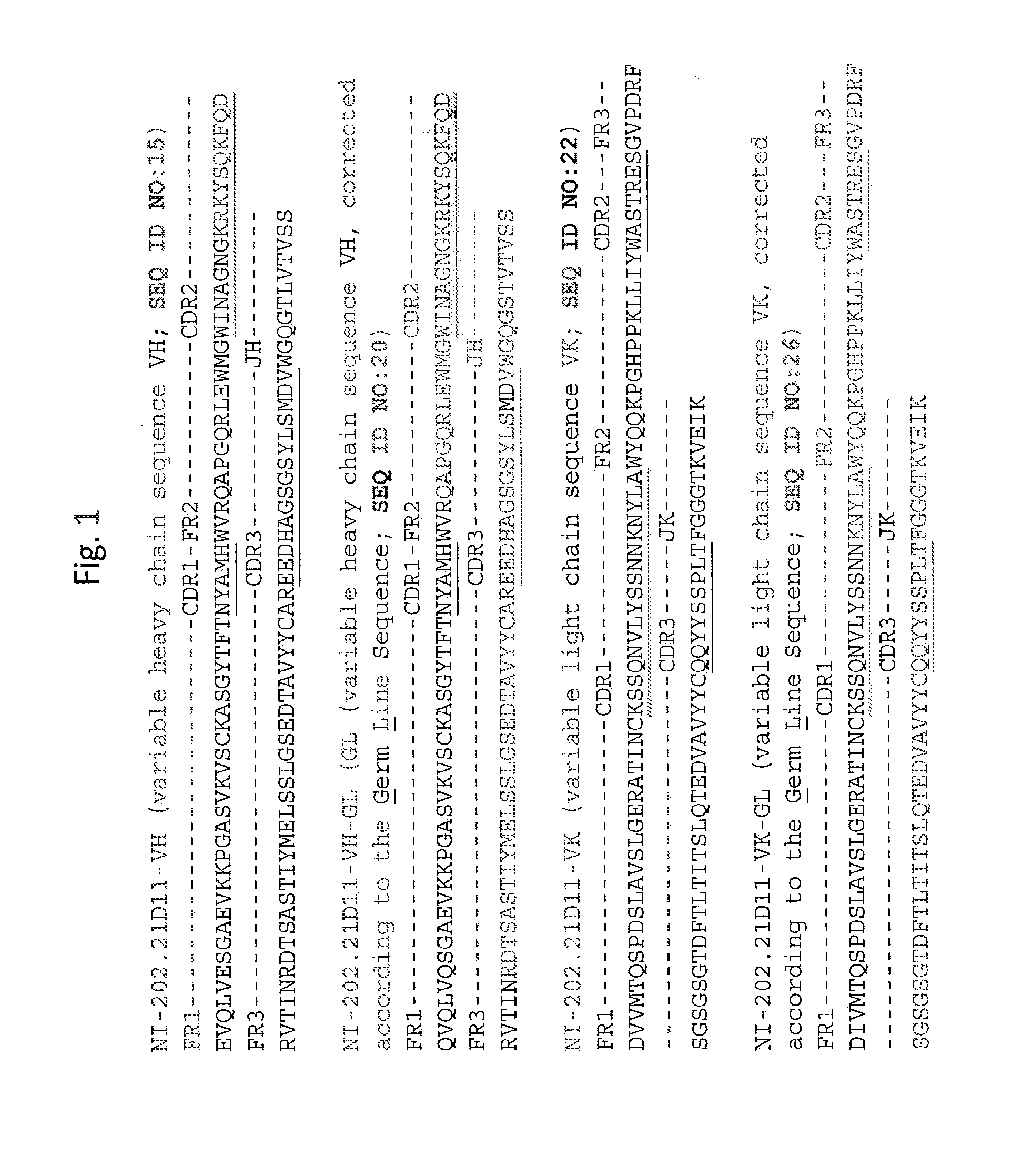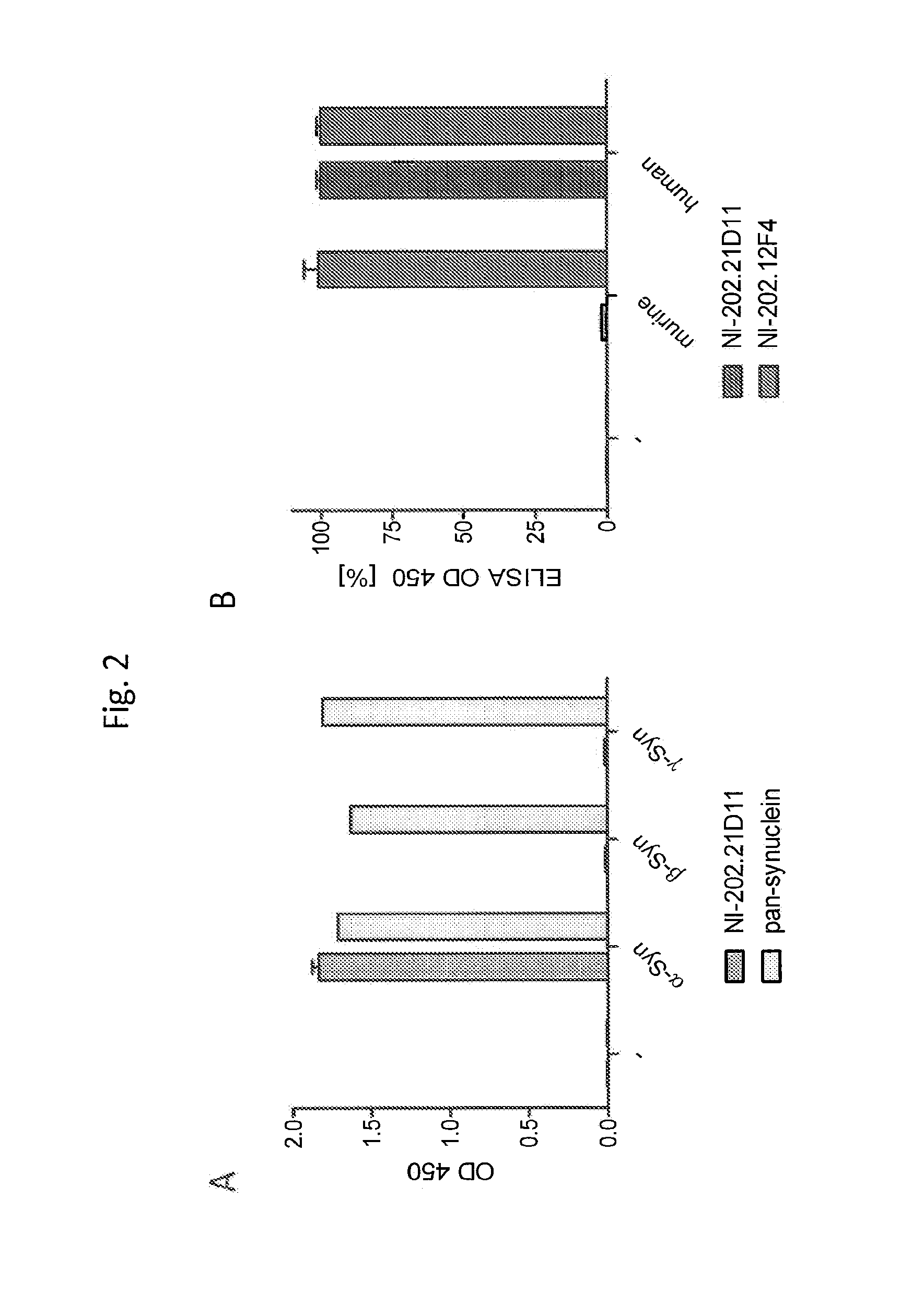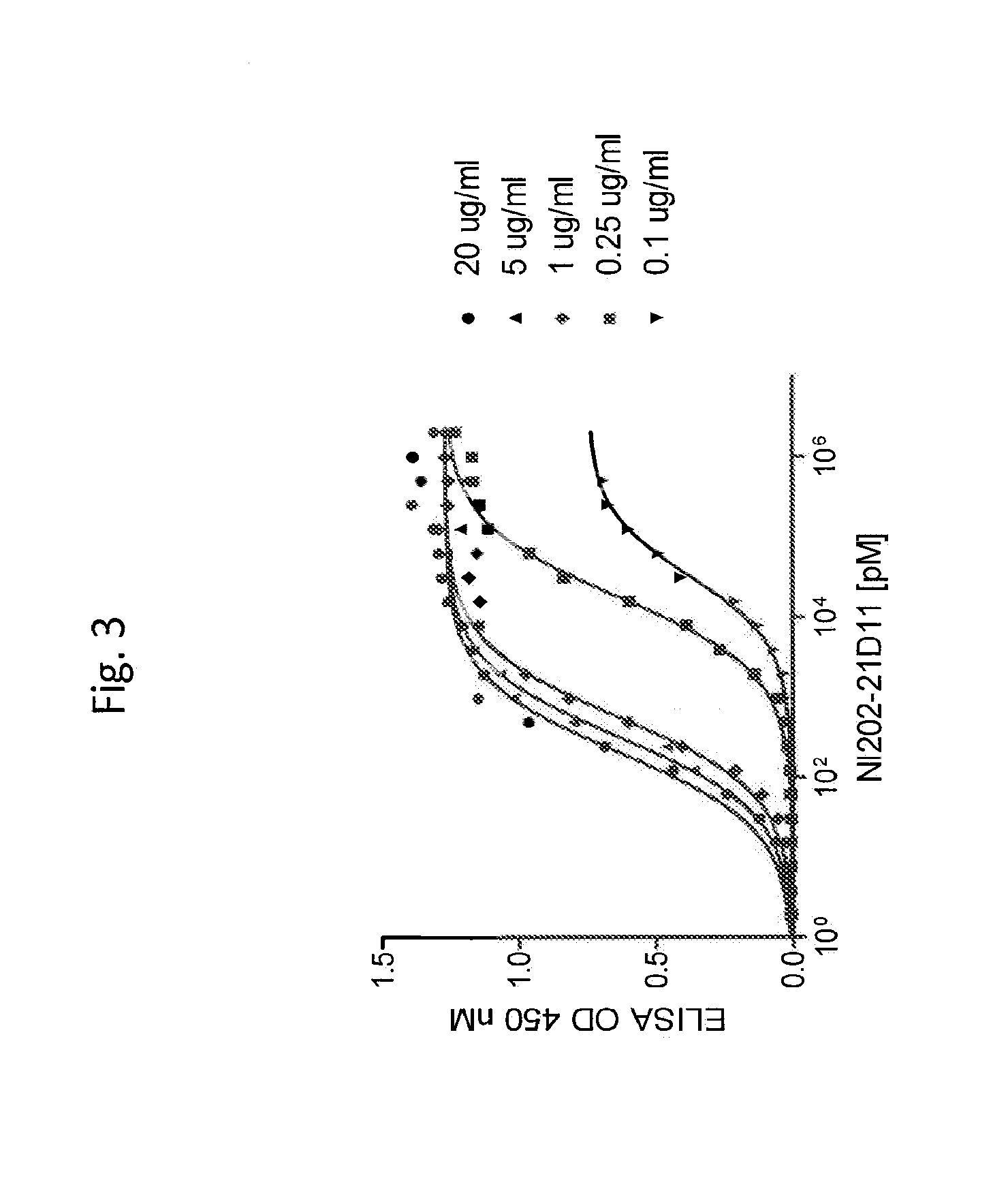Anti-Alpha Synuclein Binding Molecules
a technology of anti-alpha synuclein and binding molecules, which is applied in the field of new synuclein-specific binding molecules, can solve the problems of difficult assessment of the therapeutic significance of autoantibodies, lack of straight-forward experimental approaches, and toxic small oligomeric aggregates
- Summary
- Abstract
- Description
- Claims
- Application Information
AI Technical Summary
Benefits of technology
Problems solved by technology
Method used
Image
Examples
example 1
Human Derived α-Synuclein Antibody NI-202.21D11 is Selective for Human α-Synuclein
[0245]α-, β- and γ-synuclein are highly homologous proteins that are predominantly expressed in the nervous system, skeletal muscle and heart. α-synuclein is strongly linked to a broad spectrum of CNS diseases whereas β-synuclein can be a neuroprotective protein. Thus the invention provides therapeutic antibodies against pathological α-synuclein variants which do not cross react with β- and γ-synuclein. In order to support potential therapeutic use of NI-202.21D11, the antibody was tested for binding to α-, β- and γ-synuclein in a direct ELISA. Recombinant α-, β and γ-synuclein was coated onto ELISA plates at equal concentration and then either incubated with recombinant NI-202.21D11 or a control pan synuclein antibody. The pan-synuclein antibody detects all three synuclein proteins but NI-202.21D11 displays selective binding for α-synuclein (FIG. 2a).
[0246]Human and mouse α-synuclein are highly conser...
example 2
NI-202.21D11 Shows Preferential Binding to Human α-Synuclein at High Coating Concentrations Pointing to a Conformational Epitope
[0247]The half maximal effective concentration (EC50) indicating the potency of NI-202.21D11 was determined for low and high coating concentrations of recombinant α-synuclein using a direct α-synuclein ELISA. High affinity binding of recombinant NI-202.21D11 with an EC50 of ˜200 pM was observed for high coating concentrations of α-synuclein protein (20 μg / ml). At lower concentrations of α-synuclein, a sharp decrease in affinity was observed (FIG. 3). These characteristics are in strong contrast to commercially available antibody syn211 that is also detecting an epitope in the C-terminal domain of α-synuclein. This finding suggests that NI-202.21D11 prefers an epitope that is formed or exposed under high density conditions such as found in high molecular weight species of α-synuclein.
example 3
Recombinant NI-202.22D11 Binds to Pathological α-Synuclein Species in the Brain
[0248]Binding of NI-202.21D11 to human α-synuclein was further characterized by immunohistochemical staining of brain sections from α-synuclein transgenic mice and from a patient with a neuropathologically confirmed synucleinopathy (Dementia with Lewy Bodies). NI-202.21D11 shows prominent staining of Lewy Body and Lewy Neurite like inclusions on Proteinase K treated paraffin sections from brain tissue of transgenic mice overexpressing human α-synuclein A53T (FIG. 4a). No NI202-21D11 staining was detected in brain sections from wild-type mice supporting that NI-202.21D11 is specific for human α-synuclein (FIG. 4b). NI-202.21D11 also detected pathological α-synuclein in human brain tissue of a patient with Dementia with Lewy Body (FIG. 4c). These results show that human-derived antibody NI-202.21D11 detects pathological α-synuclein in brain.
PUM
| Property | Measurement | Unit |
|---|---|---|
| concentration | aaaaa | aaaaa |
| concentrations | aaaaa | aaaaa |
| concentrations | aaaaa | aaaaa |
Abstract
Description
Claims
Application Information
 Login to View More
Login to View More - R&D
- Intellectual Property
- Life Sciences
- Materials
- Tech Scout
- Unparalleled Data Quality
- Higher Quality Content
- 60% Fewer Hallucinations
Browse by: Latest US Patents, China's latest patents, Technical Efficacy Thesaurus, Application Domain, Technology Topic, Popular Technical Reports.
© 2025 PatSnap. All rights reserved.Legal|Privacy policy|Modern Slavery Act Transparency Statement|Sitemap|About US| Contact US: help@patsnap.com



